By Louise Irvine
Bees have been declared the most important living beings on this planet by wildlife experts and scientists, who have added them to the endangered species list. Albert Einstein once predicted that if the bees disappear, humans would have four years to live. See how they have inspired the fired arts at WMODA.
Bees are important pollinators of food crops and it is estimated that 70% of the world’s agriculture depends on bees. Recent studies show a dramatic decline in the world’s bee population as almost 90% has disappeared in the last few years. There’s been a lot of press coverage about the mysterious conditions under which they seem to be dying en masse in their beehives. Among the reasons cited for their extinction are the uncontrolled use of pesticides, climate change, and habitat destruction. Several high-profile celebrities are stepping in to help save the bees, notably Morgan Freeman who has converted his Mississippi ranch into a bee sanctuary.
The popular expression “As busy as a bee”, particularly in relation to women’s work, can be traced back to the late 14th century and Geoffrey Chaucer’s Canterbury Tales. Bees are indeed busy little insects. While they are buzzing around from plant to plant, collecting nectar that they use to make honey, they are also pollinating plants. Bees pollinating apple blossom inspired a detailed representation in Royal Worcester china by Dorothy Doughty in 1942. More recently, Sally Tuffin has played on the hexagonal pattern of honeycomb in her Blossom and Bee collection for the Dennis Chinaworks.
Victorian Majolica artists were frequently inspired by nature and bees often feature in functional items such as honeypots in the form of beehives. Bees were also fashioned into wall pockets for holding flowers by potteries such as Sarreguemines in the early 1900s. Bees sometimes buzz into the work of the Ardmore studio in South Africa. Their artists often draw attention to endangered species with their whimsical ceramic works. A humorous vase, which has recently joined the WMODA collection, depicts some explorer monkeys searching for bees with binoculars.
Bees often get confused with wasps, because their coloring is similar, and they can both give painful stings. However, wasps do not make honey and are naturally more aggressive. Wasps can sting multiple times while bees can sting only once and die after attacking. The expression wasp-waist became popular in Victorian times when ladies used corsets to create tiny waists. Extreme tight cinching was a fad in the 1870s, sometimes just 18 inches in diameter! Cartoons in Punch magazine’s Designs after Nature ridiculed the absurdity of ladies fashions in relation to insects, including the wasp waist.
Referring to something as the “Bee's Knees” means that it is excellent or very high quality. There are several theories as to the origin of this expression. Some believe that it is a reference to the pollen sacks that bees carry on their knees and alludes to concentrated goodness. Others maintain that it is a corruption of the word “business”. It has even been suggested that it refers to Bee Jackson, a world champion Charleston dancer during the 1920s, also known as Miss Fancy Feet.
Whatever the origin of the “bee's knees”, this accolade applies to the glass art of Paul Stankard, which often includes bees. His flameworked glass insects are so accurately represented that you can even see the tiny hairs and pollen on their bodies. As well as creating brilliant botanical orbs and paperweights, Paul expresses himself in poetry and has written about the role of “scented foragers” in nature’s continuum. (see below) An exhibition of Paul’s work will open at WMODA on November 8.
Easily observed natural events, such as bee pollination and egg-laying birds, led to the expression “The Birds and the Bees” to explain courtship and sexual intercourse to young children. In 1909, Dr. Emma Drake wrote The Story of Life, referring to the birds and the bees, which was reprinted many times during the 20th century in Safe Counsel. Cole Porter has also been credited with coining the euphemism in his famous song from 1928, Let's Do It, Let's Fall in Love.
And that's why birds do it, bees do it
Even educated fleas do it
Let's do it, let's fall in love
Read more about Paul Stankard in Louise’s article Brilliant Botanicals
Honeybees
by Paul J. Stankard
In the hive
honeybees
breed
virgin queens.
Scented foragers
guided by sun
dance their language
about harvesting
to be done.
Dusted murmuring bodies
rubbing pink clover
wing repeated visits
lured by field's odor.
Nectar
gathered in sun
made into honey
Nature’s continuum.

Honey Bee
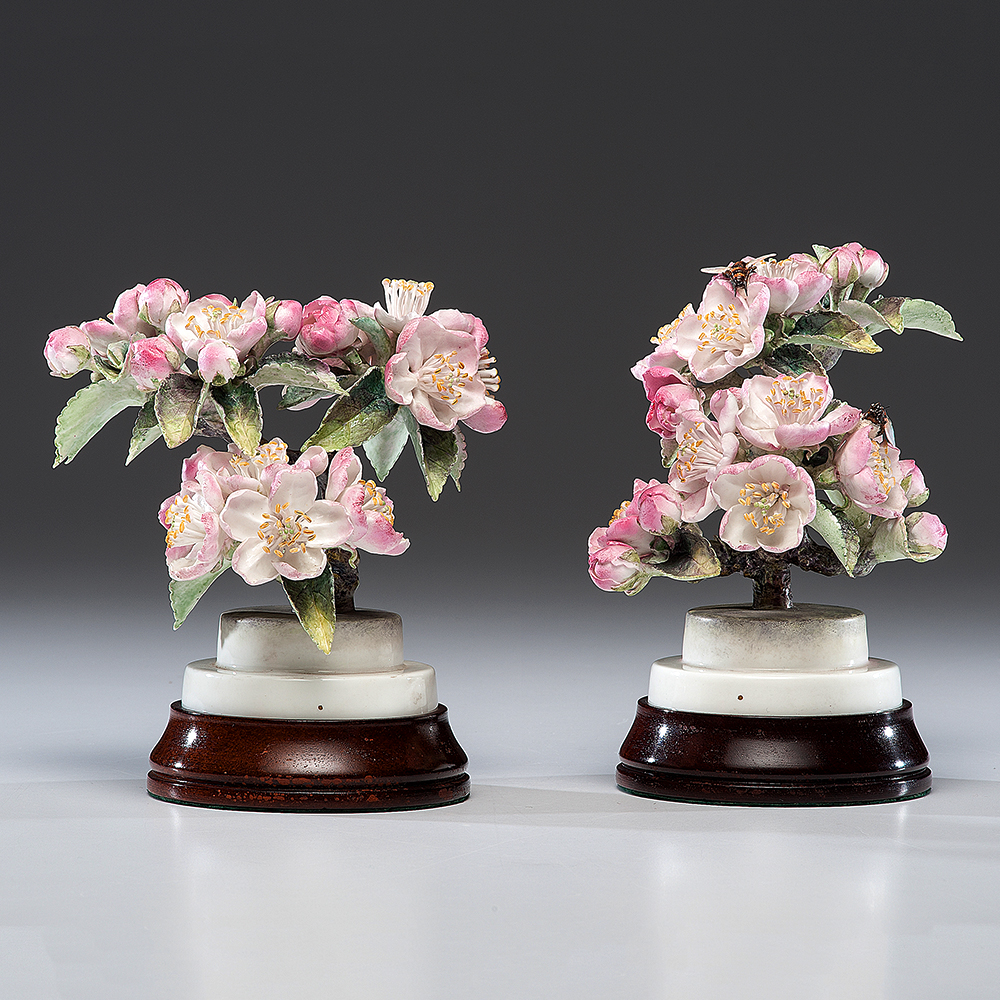
Royal Worcester Apple Blossoms and Bees by D. Doughty
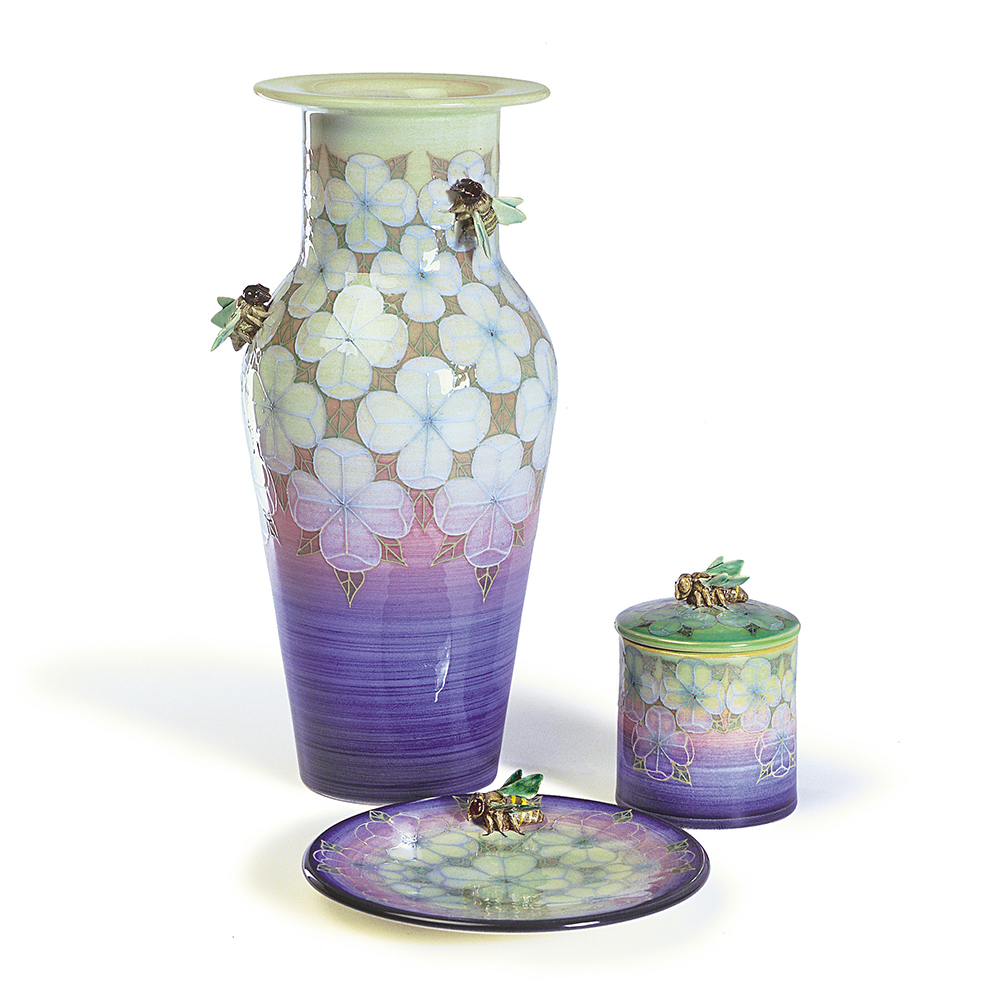
Dennis Chinaworks Blossom & Bee by S. Tuffin

Minton Beehive Honey Pot

Admore Monkeys and Bees

Ardmore Bee Candlesticks
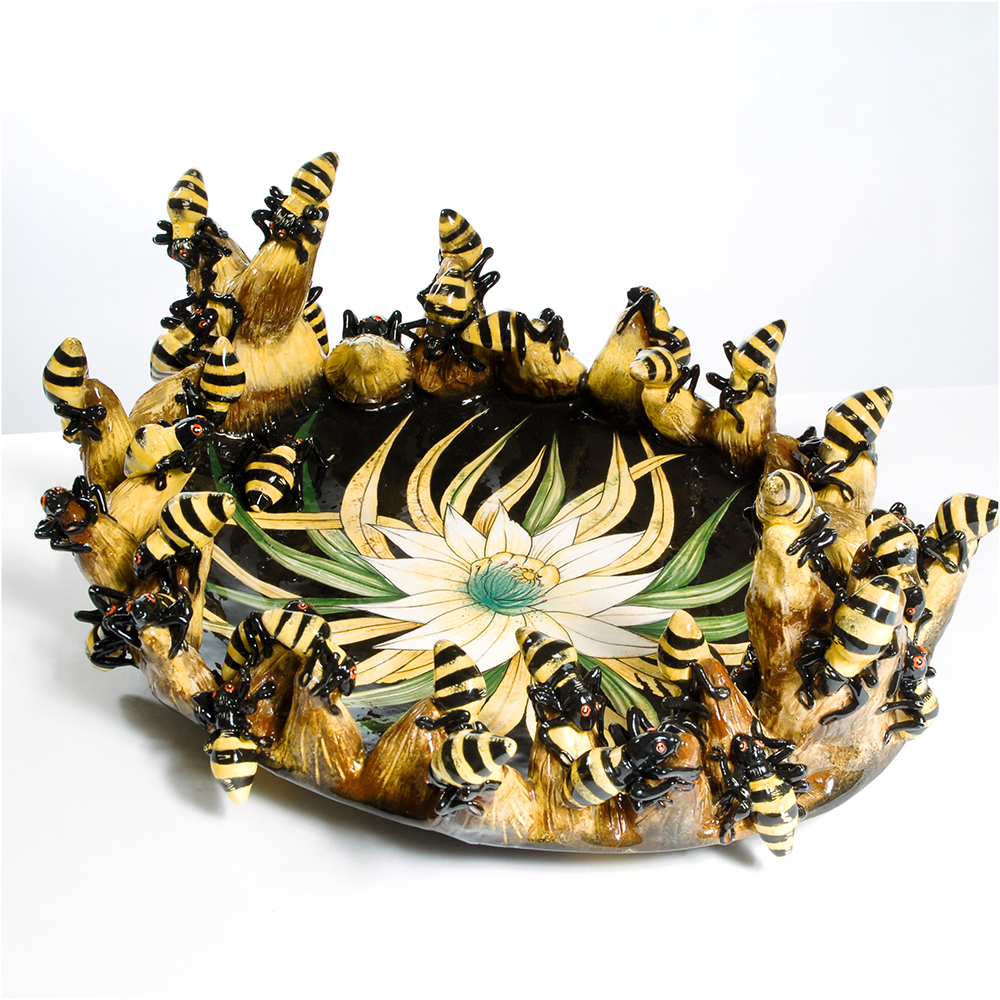
Admore Bee Tray
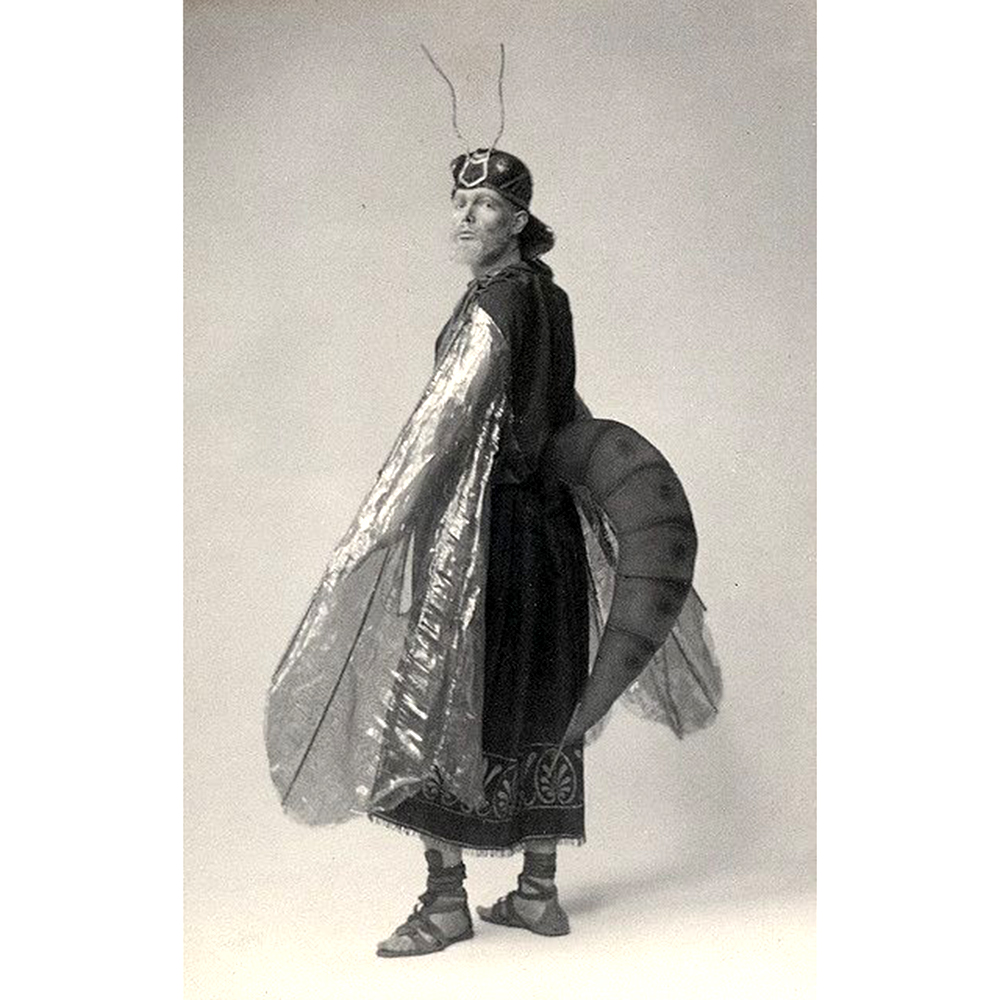
Wasp Costume

Punch Magazine Wasp Waist Cartoon
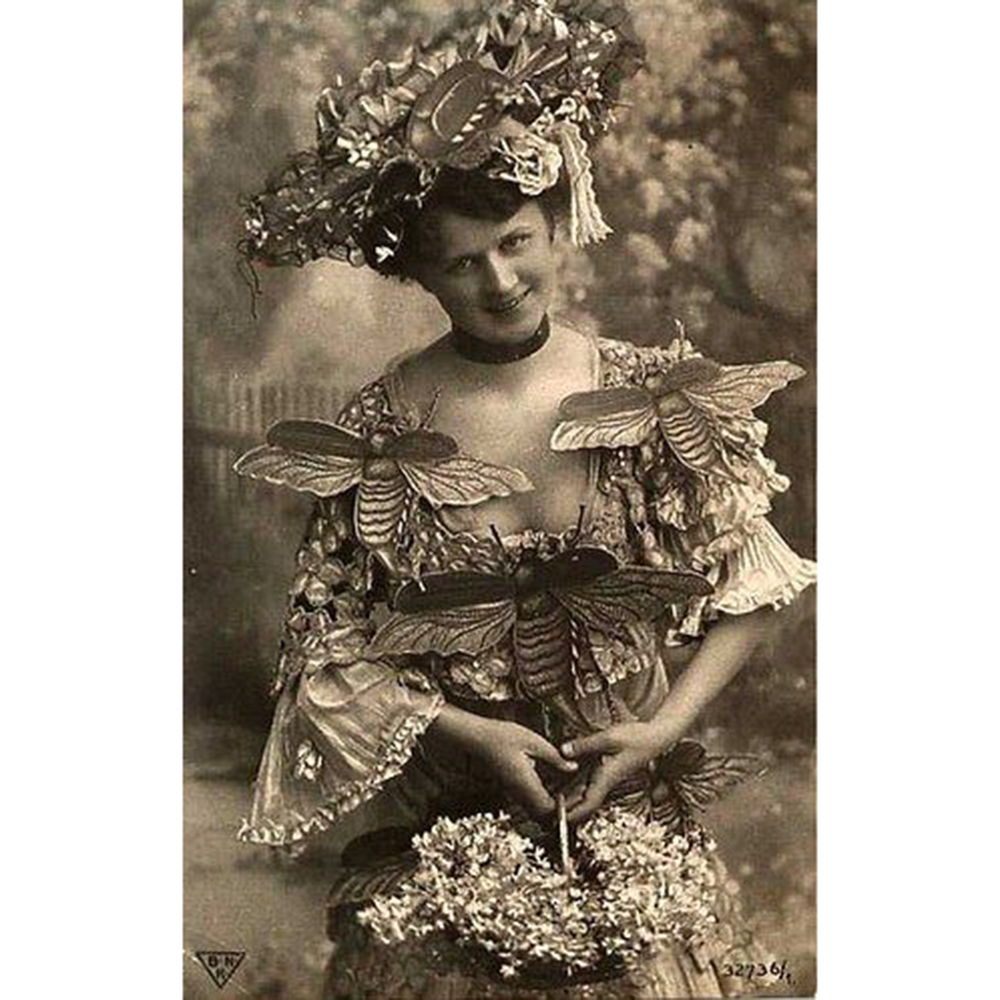
Bee Costume
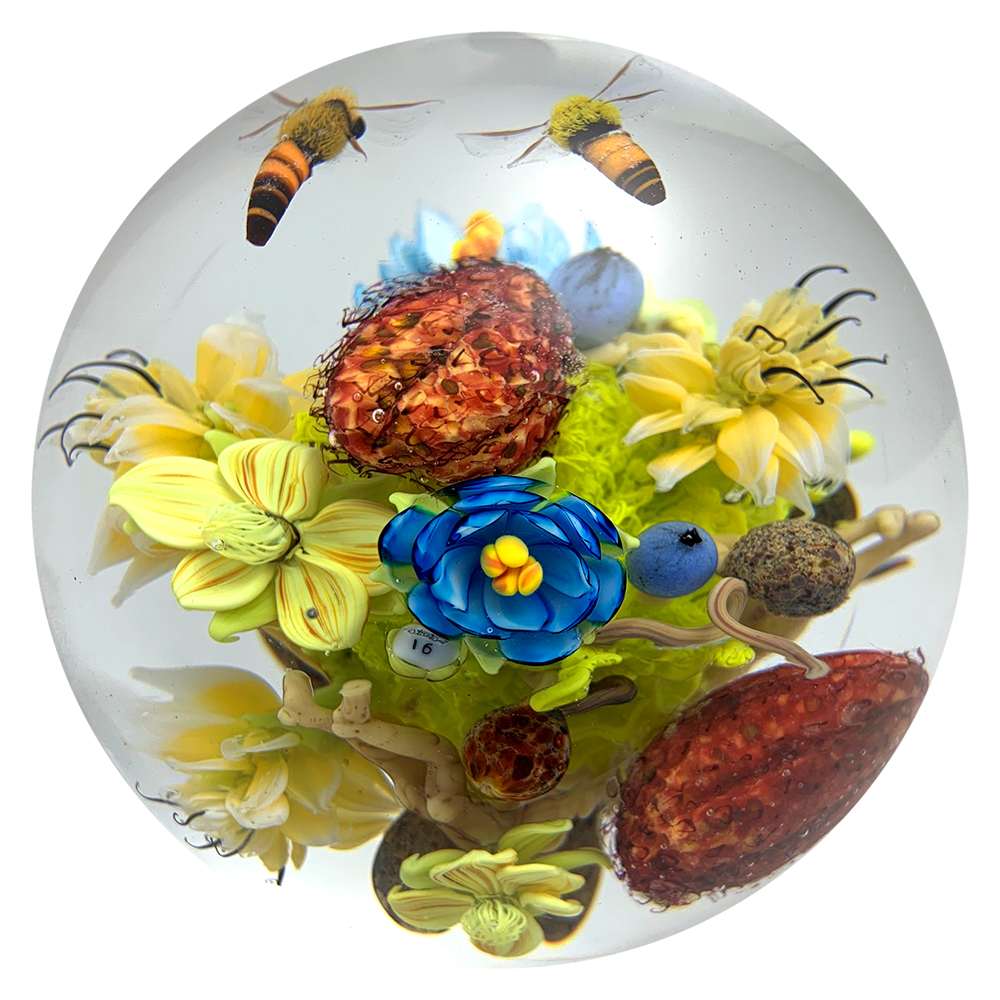
Walt Whitman Garden by P. Stankard

Emily Dickenson Secret Garden by P. Stankard
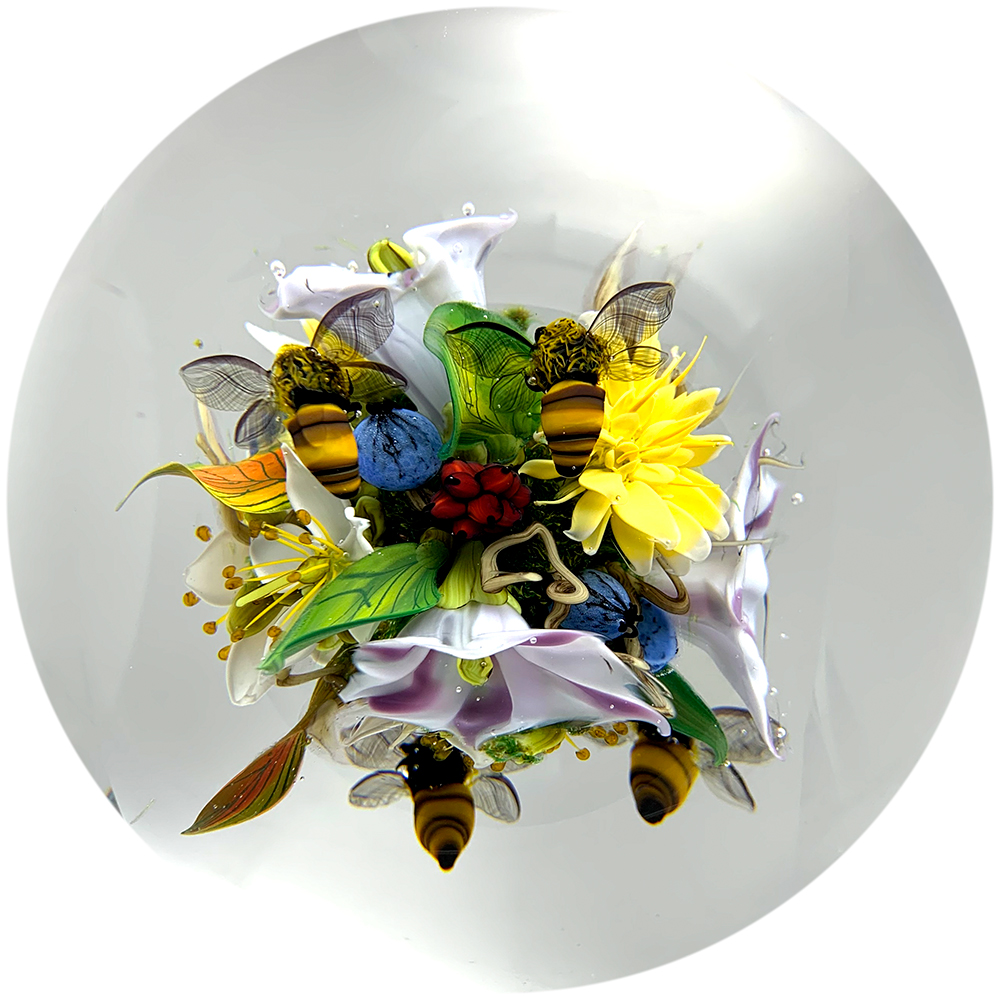
Morning Glory Bouquet by P. Stankard

Morning Glory Bouquet detail
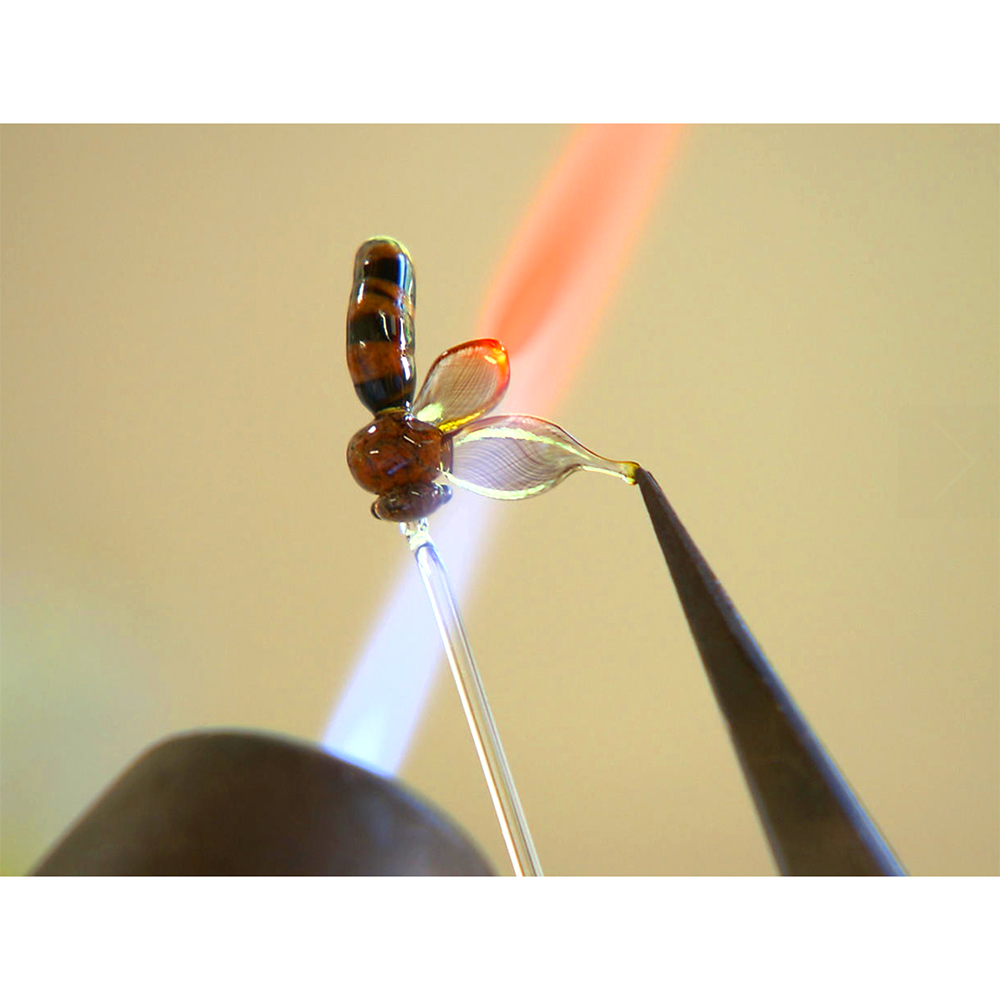
Paul Stankard Flamework Honeybee courtesy of CBS News
